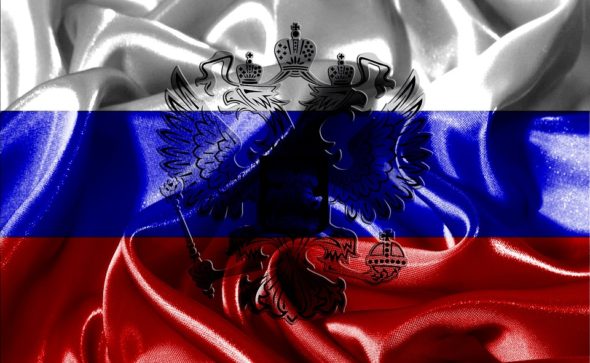Russia’s potential full-scale invasion on Ukraine will not be an easy campaign. Despite Russia’s many advantages, Ukraine is not doomed to fail, and its army is not the same as it was in 2014 when it gave up on Crimea without firing a shot – writes Mariusz Marszałkowski, editor at BiznesAlert.pl.
Ukraine has been conducting military operations against Moscow-backed separatists in the east of the country for eight years. In February 2015 the active part of the conflict morphed into a static phase. The front line has stabilized, both sides dug in positions and with varying frequency conduct offensive operations as well as artillery attacks against each other.
There is also a cyclical escalation of tensions on the part of Russia, which, through ostentatious maneuvers at the border, creates the impression of an imminent invasion of Ukraine. This is repeated regularly, and is aimed at forcing Ukraine to take decisions that go against its interests, one of which is granting special statuses to the occupied regions, or federalizing the entire country. The current escalation of tensions is not fundamentally different from the previous ones, except for the much bigger military presence. However, this is related to a wider agenda. Whereas earlier Kyiv was the addressee of the threats, now the stakes are higher, and the main message is directed at the West, with the US being the main recipient. Moscow wants to settle several issues at the same time. This is about a wider aspect of the security environment in Europe, including the presence of the US on NATO’s eastern flank, the anti-ballistic infrastructure, which is being installed in Poland and Romania, as well as the controversial Nord Stream 2 pipeline. Moscow is also trying to force (also through Western partners) Ukraine to implement an interpretation of the Minsk agreement from February 2015 that is detrimental to Kyiv. It is not clear what will happen if Moscow decides that it is not getting what it wants from this escalation. Russia has repeatedly shown that logical arguments, whether economic or political, are not the main determinant of its final decision. For now, in the midst of the diplomatic marathon that Western countries are engaged in with Russia, the risk that a full-scale conflict will erupt seems slim. The Russian modus operandi, known from previous escalations (the most serious one was in November 2018, when it shelled and forcefully seized several Ukrainian ships trying to cross the Kerch Strait into the sea of Azov), usually ends in a climax in which Russia may decide that it has achieved its goal. This culmination hasn’t taken place yet, as new highest-level meetings between western politicians and the Kremlin are still being scheduled.
For now, Russia is achieving its goals without firing a single shot. The cost of mobilisation, although huge and unseen since the collapse of the Soviet Union, is much lower than the cost of real combat operations. Contrary to popular opinion, these operations do not have to end in the „massacre” of Ukrainians.
The Kremlin, as a rule, does not care about the public opinion. This was evident when it increased the retirement age and the VAT rate right before the 2018 World Cup. However, the damage to its image that may be caused by (obviously) clandestine, mass burials of killed Russian soldiers could be too big, even for the Russian nation that is usually unbothered by such problems. Funerals, especially if conducted frequently, could turn into „meetings” that may turn out to be dangerous for the government. And the participants wouldn’t include the political opposition, but regular Russians. Families, neighbors or friends of the casualties. Moscow had a taste of this in 2014 and 2015, but then the scale of Russian involvement was much smaller than the engagement expected during the open and official conflict today. Funeral ceremonies alone, of course, will not change the government in the Kremlin, but the profits that Russia is hoping for in case of a full-scale conflict may not balance the losses. It is worth remembering that the presidential elections will be held in 2024, and Putin wants to keep the power. Potential losses, mainly personal ones, because to the economic ones Russians are accustomed, can greatly affect the social mood.
Those who delude themselves that Russia will repeat the bloodless maneuver of 2014, during the annexation of Crimea, may be disappointed. In 2014, the Kremlin ruthlessly exploited the mess and disorganization prevailing in Ukraine, also taking advantage of the sentiment and fatigue of Ukrainians and the pro-Russian part of the society, tired with political uncertainty, scandals, corruption, and low living standards. When Russia entered Crimea, it was regarded by the Russian part of the Ukrainian society as a state that brings positive change for the ordinary citizen. Higher wages, better health and social care, political stability. In addition, it also brought back positive associations for those who still remember the Soviet times, but are disappointed with Ukraine. Today, there is no trace of this sentiment, especially for those who have seen life in occupied Donetsk or Luhansk. When it comes to the other elements, apart from the wages and social benefits, Russia’s offer is not a lot better than Ukraine’s. Those who presented the most pro-Russian views moved to Russia, to the occupied areas of Donbas or annexed Crimea. The „Ruskij Mir” is not the personification of paradise, which the Russians themselves tried to portray earlier. 2014 and all subsequent years awakened in Ukraine a strong sense of statehood and identification with the nation. The Russians, through their aggressive policy, instilled in Ukrainians patriotism and dislike of Russian imperialism. This process will progress every year in direct proportion to the level of Moscow’s aggression.
However, the most important thing from the perspective of a military aggression is a change in the military potential of the enemy, that is, Ukraine. While at the time of the annexation of Crimea the Ukrainian army was in disarray, demoralised, disorganised and under-invested, today the situation is quite different. Despite the fact that a huge portion of weapons and equipment of the Ukrainian armed forces still remembers the times of the Soviet Union, in recent years there has been a significant increase in the military potential presented by Ukraine. This was achieved through the successive modernization of the army with the help of its own arms industry, purchases made abroad and military assistance from Western countries.
The Ukrainian armed forces today number more than 250 thousand soldiers, of which more than 150 thousand are in the ground forces. Plus, almost 50 thousand serve in the State Border Service and about 60 thousand in the National Guard. Both formations are under the command of the Ministry of Internal Affairs. The armed forces have equipment that was particularly lacking in 2014 – modern anti-tank systems manufactured in the West, such as Javelin, or NLAW, anti-aircraft systems, such as Stinger or the Polish Piorun. In addition, the Ukrainian army received thousands of nocturnal and thermal surveillance systems, communications, ballistic protection and modern arms, including sniper rifles.
Today the armor is mostly equipped with T-64 tanks that have been modernized and furnished with thermal targeting systems and modern comms. Transporters BTR-3 and BTR-4, armed with a 30mm cannon as well as PPK Barier are used to transport infantry in motorized sub-divisions. Importantly, the Ukrainian army has purchased and received numerous unmanned aerial vehicles, including the medium-range BSP Bayratkar TB2, Polish BSP Flyeye, or numerous products manufactured by the Ukrainian military complex.
Since 2014, the Ukrainian military industry has been renovating and modernizing Soviet production systems, including, sets plot S-300PS, TOR-1, BUK or Tunguska. This equipment is no match for the requirements of the modern battlefield, but it still is, especially after the modernization, solidly capable of combating the majority of machines owned by Russia.
In recent years Ukrainians, also completely on their own, have been resuscitating and modernizing their air force. Today it consists of about 70 combat aircrafts, including Su-27, MiG-29, Su-24 or Su-25. However, given the potential of the Russian air force accumulated near Ukraine (more than 500 machines) and the saturation with Russian anti-aircraft weapons, next to the Ukrainian navy, the airforce is the weakest link in Ukraine’s defense system.
Ukraine will not be a walk in the park for Russia
However, in case of a possible clash, the equipment, although important is not the only factor that will determine Russia’s victory or defeat. Other elements that will play an important role include morale, reconnaissance and combat experience. Ukrainians, aware of the consequences of a possible defeat, have much greater motivation to fight than Russian soldiers, for whom the possible war was initiated to meet the expectations of politicians in the Kremlin. Despite the propaganda pathos, this will not be a liberation war, but an ordinary, cut-throat attack on a neighbor, who was once allegedly even a „brother”. It is the Ukrainians, not the Russians, who will be willing to make extraordinary sacrifices to defend their homeland. The spectre of a full-scale war, which has been weighing over Ukraine for several years, has forced not just the Ukrainian army, but also the entire state apparatus to prepare. Today, there will be no shock, no surprise. The never-stopping tensions got Ukraine accustomed to the pressure exerted by Russia, and taught it to take a cooler and more calculated approach to defense. What is important here is the reconnaissance carried out by the Ukrainians themselves (including BSP Baryatkar), but also intelligence assistance from the US and other NATO countries. In recent weeks, British and American reconnaissance planes have been hovering over Ukraine 24/7. They monitor the Russian troops gathered on the border with Ukraine almost without a break. This is also a very important factor. According to various estimates, more than 130 BGBs (battalion battle groups) have already been gathered by the border, the number of which is estimated at 160-200 thousand soldiers. This seems huge. But there’s a bugger. These forces are deployed along the entire length of the border from Brest, at the border with Poland through Belgorod, Rostov, as far as Crimea. That’s over 2 thousand kilometers. Thanks to the intelligence provided by, among others, the US, the Ukrainians will know where the most numerous and most dangerous tactical compounds of the Russian army will be located, which may give away the point where the invasion will start. This, in turn, potentially weakens Russia’s quantitative and equipment advantage. It is clear that in case of an aggression, the Russians will create several fronts, and try to cover the main direction of the offensive. But thanks to reconnaissance from the air during peacetime, the Ukrainians will be able to gain some time to prepare and strengthen a possible line of defense.
Combat experience is as important as motivation and reconnaissance. Ukrainians have been fighting armed and Russian-led separatists for eight years. During the most intense fighting in the summer of 2014 or in the winter of 2015, Ukrainian troops often clashed with regular troops of the Russian Army, inflicting losses. Since then, over 400 thousand Ukrainian soldiers have been through Donbas. These people know their craft, have been the targets of artillery or sniper fire. A large part of the Russian soldiers deployed at the border are young conscripts with no real combat experience. I am not saying that they will be deserting the battlefield en mass, but a real shelling may verify their offensive potential, especially since many of them have been sitting in field camps on the border with Ukraine for several weeks, in poor conditions, often malnourished and tired. With each day of waiting for the attack in such conditions, their potential will be degraded, and morale itself will fall.
The Ukrainian army has systemic, equipment and organizational problems. It is not an opponent that can stand on an equal footing against the Russian army. However, the Russian army, contrary to propaganda, is not invincible, it is not a force that has just advantages and the upper hand. Ukraine has a chance to defend its independence on its own, and in the worst case scenario, to inflict losses on Russia so large that the Kremlin will think twice before it plans new invasions.









